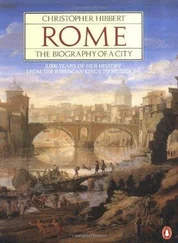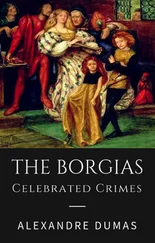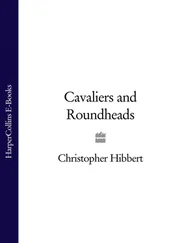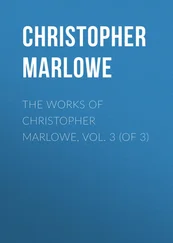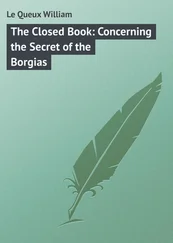Despite being shielded from the worst of the weather behind the curtains of her litter, Lucrezia found the journey exhausting. At Spoleto she insisted on stopping for two nights, much to the exasperation of the Ferrarese party, who were keen to get home. Duke Ercole was also informed that she needed to wash her hair with tiresome frequency, and he was forewarned that it would be advisable for him to postpone the date of the bride’s official reception at Ferrara.
The pope also received regular reports on the progress of his daughter’s journey and wrote to her to say that he hoped to hear from her when she reached Ferrara and that he also hoped she was ‘in good health and spirits and, above all, that her face and body were wrapped up against the tempestuous and snowy weather.’ She also heard from Cardinal Ippolito d’Este, who wrote to reassure her about her little two-year-old son, Rodrigo, whom she had been so distressed to leave behind in Rome: ‘Having sent someone this morning to visit the most illustrious lord, Don Rodrigo your son, the messenger reported that His Lordship was sleeping very quietly and contentedly; and thanks be to God he is as handsome and as healthy as anyone could wish.’
On January 16, ten days after bidding farewell to her father, the cavalcade turned off the Via Flaminia onto the steep road leading to the hilltop town of Gubbio, where the redoubtable Duchess of Urbino, Elisabetta Gonzaga, sister-in-law to Isabella d’Este, dressed in her habitual black, waited unsmilingly to meet the horsemen and rumbling carriages. The following day Lucrezia, accompanied by the thirty-year-old duchess, continued the journey in the gilded sedan chair, behind the curtains of which the two women conducted an evidently stilted conversation, their friendship hampered not least by the fact that the duchess believed Cesare guilty of abducting her protégée, Dorotea Malatesta, a year earlier.
At Urbino the duke, Guidobaldo da Montefeltro, was awaiting their arrival on the road leading to his capital, the streets of which were decorated with flags and streamers and garlands of dried flowers. Beneath these the brightly painted and heavily laden carts, drawn by bullocks, rattled and screeched into the courtyard of the ducal palace, where Lucrezia was to stay.
For two nights Lucrezia remained in Urbino, staying in the imposing castle and enjoying not only the comforts of aristocratic life but also its lavish balls, banquets, and theatrical entertainments. She appeared at one ball in a dress of black velvet with a huge diamond on her forehead, while the Spanish dwarfs, who formed an ill-disciplined and noisy addition to her suite, hopped and romped around her, crying, ‘Look at the great lady!’
Lucrezia was aware that reports about her appearance and behaviour, even details of her personal hygiene, were being sent to the jealous and formidable Isabella d’Este by her secret informant, a man known as Il Prete (the priest) but whose identity remains mysterious. When his inquisitive behaviour came to Lucrezia’s notice, she sent for the man, questioned him at length, and managed to elicit more information about her new sister-in-law than he had intended to divulge. ‘She is a lady of keen intelligence and perspicacity,’ he afterward reported of Lucrezia; ‘one had to have one’s wits about one when speaking to her.’
The luxuries of the ducal palace, however, were not to be enjoyed for long, and once again the slow and exhausting journey was resumed, now toward Pesaro, still in the stilted company of the Duchess of Urbino, who would stay with her until they reached their destination. The two women arrived at Pesaro on January 21, thankful at least that the stony snowy mountains were, at last, behind them.
At Pesaro — the city that had once belonged to her first husband, Giovanni Sforza, and was now the possession of her brother — it was Cesare’s Spanish governor, Ramiro de Lorqua, who was waiting to welcome her and escort her past the expectant populace crowding the streets. When the cavalcade finally halted that evening, Lucrezia pleaded fatigue as an excuse for not joining a ball that had been arranged in her honour but that would be attended by many of her ex-husband’s subjects; and she retired with her ladies to the quarters assigned to her, where one of her maids performed what was almost a daily ritual by washing her mistress’s long blond hair.
Riding through Cesare’s duchy, the journey along the Via Emilia pleasantly smooth after the rough jolting over the hill roads, Lucrezia reached Cesena, her brother’s capital, on January 24. Here, however, an unsettling rumour of trouble ahead brought an end to such carefree gaiety; it was said that Dorotea Malatesta’s fiancé, the mercenary commander Giambattista Caracciolo, had sworn to take revenge for the kidnapping and was now awaiting to fall upon the Borgia bride somewhere nearby.
The threat, however, did not materialize, and Lucrezia reached Bologna without incident, though her decision to delay her arrival in that city by spending a second night at Imola in order to rest must have irritated Giovanni Bentivoglio and his wife, her hosts in Bologna. After a splendid procession through the city, watched by huge crowds, and another ball, Lucrezia was so tired that she overslept the next morning.
On the last day of January, Lucrezia and the Duchess of Urbino left Bologna for the villa of their hosts at Bentivoglio, near the border of the duchy of Ferrara, and the last stop on her exhaustingly long journey from Rome. Just before sunset an unexpected party of four horsemen were seen dismounting at the door. Lucrezia’s bridegroom, Alfonso d’Este, had impetuously decided to come in person to greet his bride. ‘This act pleased everyone,’ wrote Bernardino Zambotti, the Ferrarese diarist, ‘and especially the bride and her ladies, that his lordship wished to see her,’ and did much to counter the widespread rumours of Alfonso’s opposition to the match.
Alfonso himself was clearly pleased by what he saw; and, so it was reported, he suggested that he and Lucrezia go to bed together there and then. Dissuaded from this impropriety, he returned to Ferrara, where, the next day, standing beside his father, with a company of crossbowmen behind them, he welcomed the ducal barge in which, in staterooms of considerable splendour, Lucrezia had travelled the twenty miles of waterway from Bentivoglio.
At Malalbergo she had been joined by her new sister-in-law, the jealous and hostile Isabella d’Este, who was reluctantly acting, as custom dictated, as hostess for her widowed father, the duke. Her eyes would fill with tears, so Isabella said, when she saw her mother’s ruby necklace hanging around Lucrezia’s graceful neck.
It was not until she disembarked from the ducal barge outside the walls of Ferrara that Lucrezia met her new father-in-law for the first time. The elderly Duke Ercole, almost seventy years old, seemed greatly struck by her appearance and was much entertained by the jokes and posturings of her clowns. He graciously kissed her hand before escorting her to the house of Alberto d’Este, his illegitimate brother, where she would stay the night in order to prepare for her state entry into Ferrara the following day.
The preparations in Ferrara for the arrival of the heir’s bride had been gathering pace over the past weeks: streets were cleaned, horse droppings and mud carted away; inns were fully booked; shops were stocked with splendid stuffs and mementos; tailors and dressmakers worked day and night to finish the new outfits ordered by the city’s courtiers; playwrights and poets were busy writing their dramas, while actors and orators were rehearsing their lines; flags and banners were embroidered with interwoven depictions of the Borgia bull and the Este arms; coats-of-arms of the two families were emblazoned on the gates of the ducal palace. Garlands were hung over shopfronts and tapestries draped from windows above. The army of painters and carpenters had managed to finish a series of elaborate arches erected along the route the procession would take, decorated with mythological scenes to proclaim the union of the two families, the Borgia bull standing solidly beside the black and white eagles of the Este dynasty.
Читать дальше




